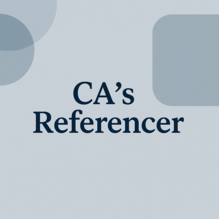New rule for joining NPS:
Corporate pension choice will need mutual consent
New Delhi, Nov 14, 2025
Regulator brings sharper checks and shared decision-making to joining scheme
The pension regulator has new rules that change how employers and employees jointly decide pension fund choices under the corporate National Pension System (NPS). A circular by the Pension Fund Regulatory and Development Authority (PFRDA) aims to remove ambiguity, strengthen transparency and ensure that retirement investment decisions are made in a structured and documented manner.
PFRDA framework
Many companies were unsure about their role in selecting pension funds and asset allocation, especially when both employer and employee contribute to NPS. The regulator found that organisations could not decide whether they could choose a pension fund on behalf of workers, and how far their responsibility extended once a fund was selected.
To address these issues, the PFRDA has now made “mutual agreement” the foundation of all investment decisions under corporate NPS. This ensures that neither the employer nor the employee takes unilateral calls on retirement savings.
What the new rules require
Documented mutual agreement
Employers and employees must formalise how pension funds and investment schemes will be chosen. This agreement must be recorded and retained.
In addition, the selected pension fund will have to be reviewed every year to check whether its performance and asset mix continue to match the agreed conditions.
PFRDA has also reminded companies that retirement savings are a long-term product and decisions should not be tweaked because of short-term movements in the market.
Mandatory employee consultation
Employers must explain various NPS schemes, risks and return expectations to employees before agreeing on an investment pattern. The idea is to ensure that employees understand what they are signing up for, especially in joint-contribution arrangements.
Space for voluntary contributions
The rules reaffirm that employees may make additional voluntary contributions under the Multiple Scheme Framework (MSF). This allows workers with different risk appetites to choose funds that suit their long-term goals, even when the corporate plan follows a mutually agreed structure.
Two-step grievance pathway
The circular sets out a clear grievance mechanism:
Employees must first raise complaints with the HR department.
Only if HR does not resolve the issue can it be taken further.
This intends to streamline dispute resolution within organisations.
Operational responsibilities for employers
Corporates must coordinate closely with Points of Presence (PoPs) and ensure all mutually agreed decisions are communicated to the Central Recordkeeping Agencies (CRAs). CRAs will not make system-level changes unless they receive explicit instructions from employers.
What this means for companies and workers
For employees, the revised rules offer greater clarity, more control over investment choices and improved transparency around how their retirement savings are managed. For employers, the updated framework reduces compliance uncertainty and provides a defined process for taking investment decisions responsibly.
Overall, the changes are designed to make the corporate NPS model more collaborative and better aligned with long-term retirement security.
[The Business Standard]


